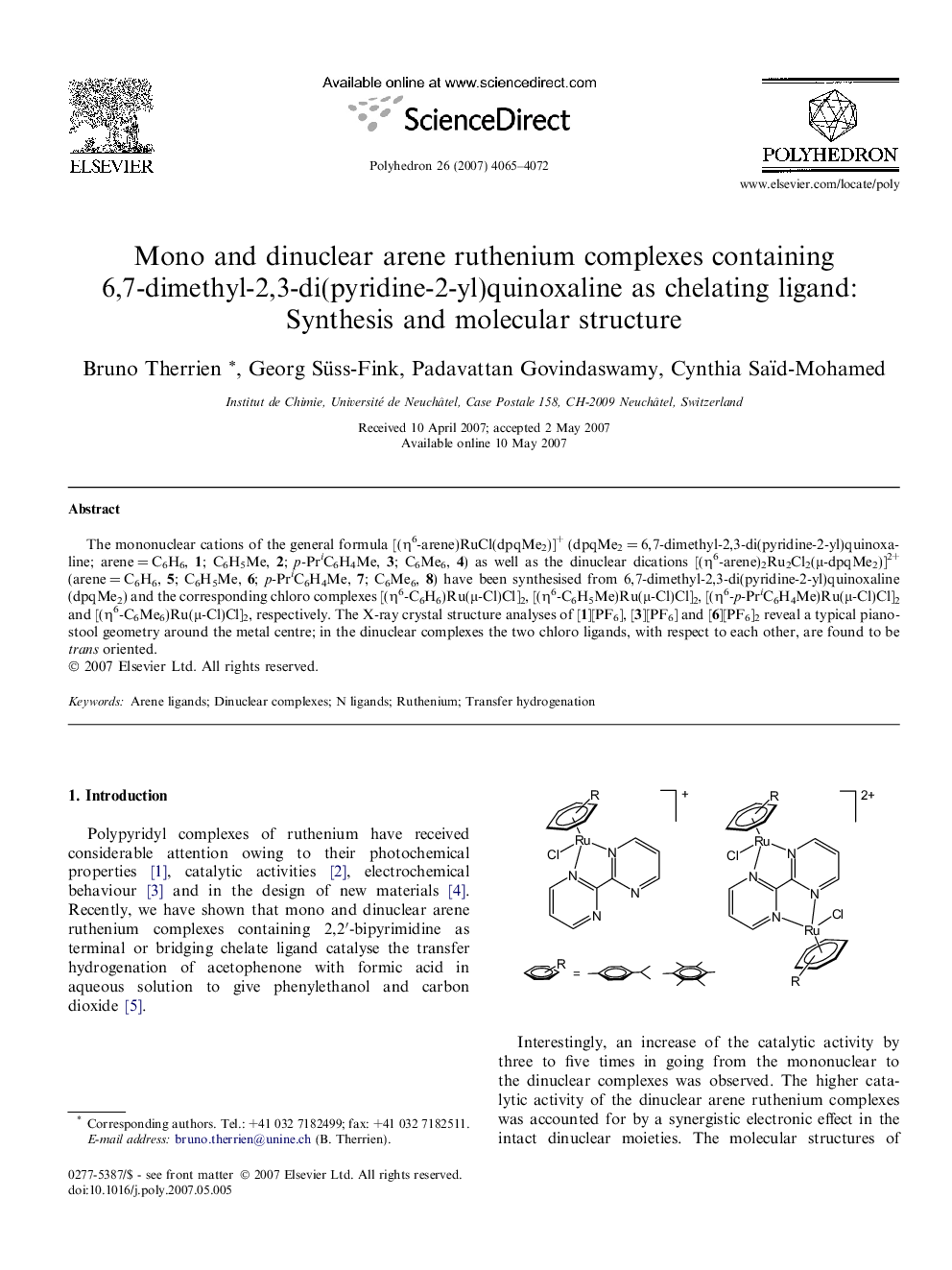| Article ID | Journal | Published Year | Pages | File Type |
|---|---|---|---|---|
| 1338281 | Polyhedron | 2007 | 8 Pages |
The mononuclear cations of the general formula [(η6-arene)RuCl(dpqMe2)]+ (dpqMe2 = 6,7-dimethyl-2,3-di(pyridine-2-yl)quinoxaline; arene = C6H6, 1; C6H5Me, 2; p-PriC6H4Me, 3; C6Me6, 4) as well as the dinuclear dications [(η6-arene)2Ru2Cl2(μ-dpqMe2)]2+ (arene = C6H6, 5; C6H5Me, 6; p-PriC6H4Me, 7; C6Me6, 8) have been synthesised from 6,7-dimethyl-2,3-di(pyridine-2-yl)quinoxaline (dpqMe2) and the corresponding chloro complexes [(η6-C6H6)Ru(μ-Cl)Cl]2, [(η6-C6H5Me)Ru(μ-Cl)Cl]2, [(η6-p-PriC6H4Me)Ru(μ-Cl)Cl]2 and [(η6-C6Me6)Ru(μ-Cl)Cl]2, respectively. The X-ray crystal structure analyses of [1][PF6], [3][PF6] and [6][PF6]2 reveal a typical piano-stool geometry around the metal centre; in the dinuclear complexes the two chloro ligands, with respect to each other, are found to be trans oriented.
Graphical abstractThe reaction of [(η6-arene)Ru(μ-Cl)Cl]2 (arene = C6H6; C6H5Me; p-PriC6H4Me; C6Me6) with 6,7-dimethyl-2,3-di(pyridine-2-yl)quinoxaline (dpqMe2) in methanol yields cationic mononuclear and dinuclear complexes with a chelating dpqMe2 ligand. On the basis of a structural characterisation, the catalytic potential of these complexes for transfer hydrogenation reactions has been studied.Figure optionsDownload full-size imageDownload as PowerPoint slide
